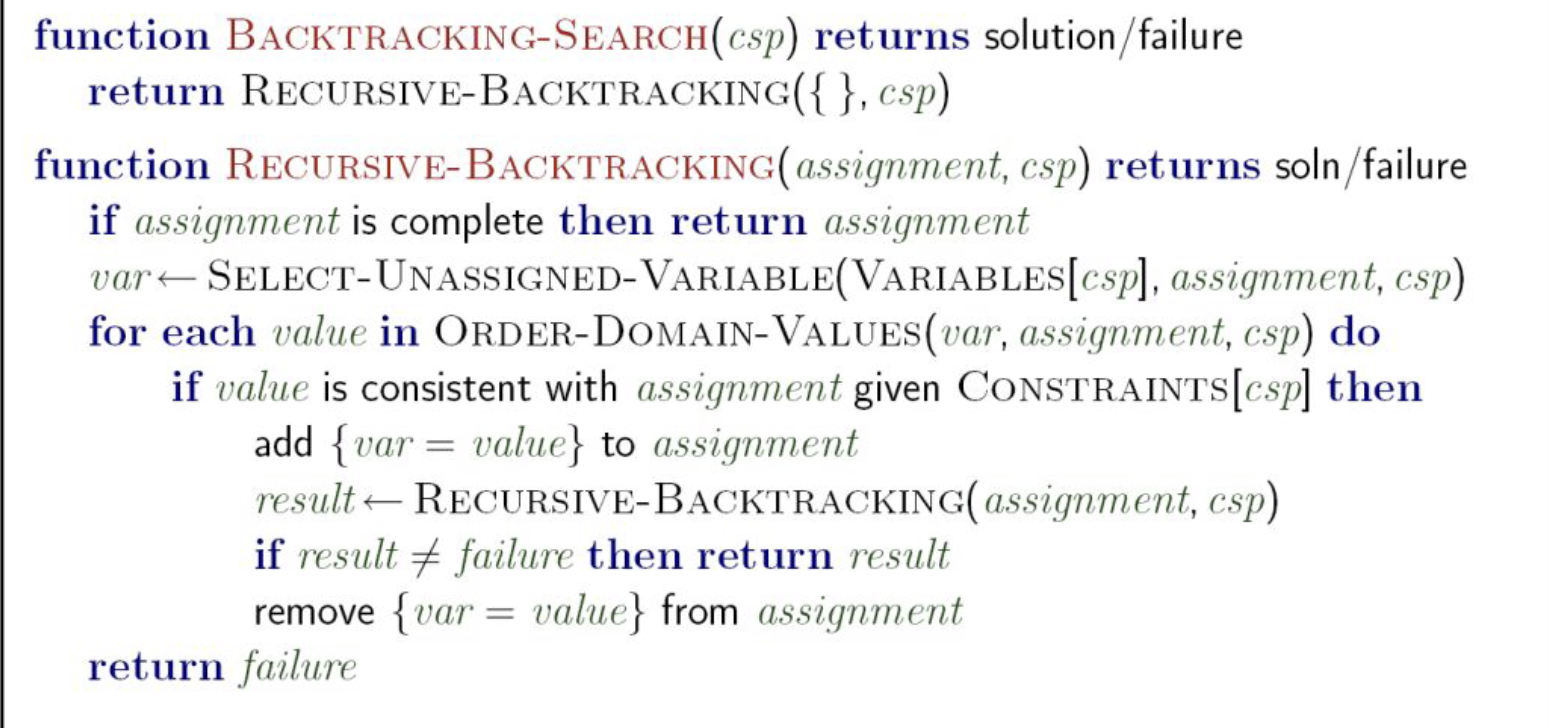Backtracking Search
Description:
- Idea 1: One variable at a time
- Variable assignment can be commutative so no ordering, ex: A = Red, B = Blue can be switched
- Only need to consider assignments to a single variable at each step
- Idea 2: Check constraints as you go
- Only consider the assignments that doesnt conflict with all the previous assignments
- ie, “Incremental goal test”
- Therefore, each states has child states as possible assignments
- DFS with these 2 ideas are called Backtracking Search

Filtering:
- Help detects inevitable failure early
- Forward Checking:

- if we assign WA to red, then NT and SA cant be red
- If we assign G to green then NT and NSW and SA cant be green
- But SA and NT cant both be blue → terminate G to green (constraint propagation)
- Propagates information from assigned to unassigned variables, but doesn’t provide early detection for all failures
- Constrant Propagation: reason from constraint to constrant
Arc Consistency:
- O(n2d3) can be reduced to O(n2d2)
- An arc X → Y is consistent iff for every value x there is some allowed value of y
- If it is violating, delete from the tail (the “from” node)
- If X loses a value, neighbors of X need to be rechecked!
- Therefore, detect failture faster than Filtering
- The Entire CSP is arc consistency if every arcs are consistent
- Can be run as a preprocessor or after each assignment
- Limitation:
- Can have 1 solution left after
- Can also have multiple solution
- Can have no solution but not knowing it
- ex: A=R/B, B=R/B, C=R/B while ABC are connected
- because they are only checked between 2 nodes at a time
K-consistency:
- 1-consistency: a node meets its own unary requirements
- 2-consistency: any 2 nodes are consistence, Arc Consistency
- 3-consistency: path consistency
- k-consistency: any k-nodes are consistence
- more k → more expensive to compute
- k-consistency also mean that k-1, k-2,k-3,… are also consistence
Ordering with new heuristics:
- Minimum Remaining Values (MRV) as a heuristic:
- Which variable should be assigned next? (MRV)
- Choose the variable with the fewest legal values left in its domain
- ”most constrained variable”
- if it gonna fail, reach failure faster
- Least Constrining Value as a heuristic:
- What order should the values be tried? (LCV)
- Determine which value has the least constraint
- pick the value with the least so there is more options for other variables
- Takes more computation
- Increase likeliness of having solution
- 1 value is less constrained than another by rerunning Filtering
Structure exploiration:
- Can we exploit the problem structure?
- Independent subproblems:
- break big problem to subproblem → exponentially faster
- As a tree-struc:

